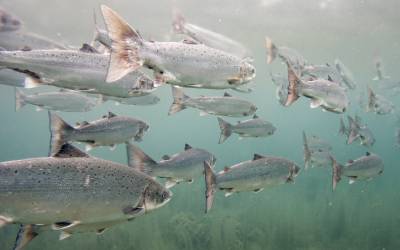Barely a century ago, the river Eira, which flows into the innermost part of Romsdalsfjorden in Norway, was famous for its large salmon. The average Eira salmon at that time was 12 kilograms, and catching a 20 kg salmon was not uncommon.
Today, the average salmon in the river Eira is four kilograms. In other words, the size of salmon has reduced to a third over a few decades.
What happened to the large salmon in the Eira river?
Ingerid Julie Hagen is one of the scientists who pondered this very question. With the help of genetic analyses, long time series and statistical models, Hagen and her colleagues found the explanation – and documented human-induced evolution in a natural population.
“We found that the reduction in mass is an evolutionary response to reduced waterflow. Like many other salmon rivers, the Eira is affected by hydroelectric power production. In just a few generations, the salmon have adapted to the low waterflow and no longer grow as large,” Hagen says.
READ MORE: PARTNER SCIENCE NORWAY

